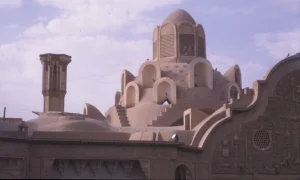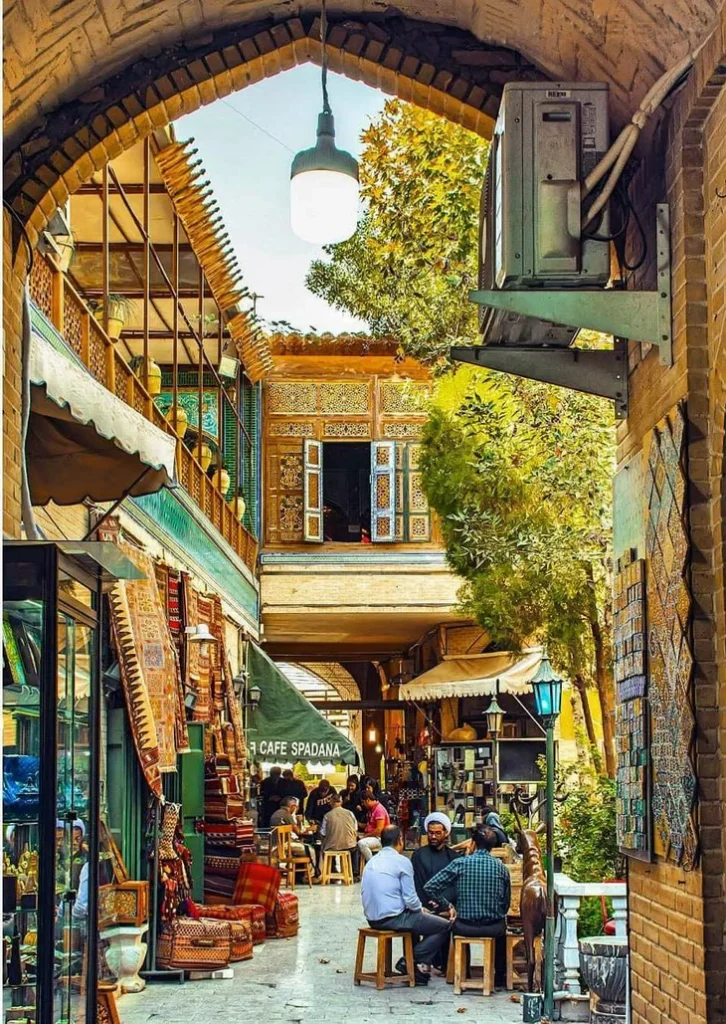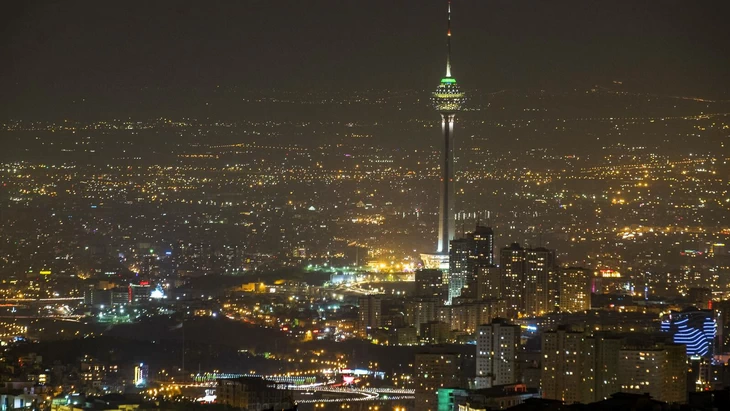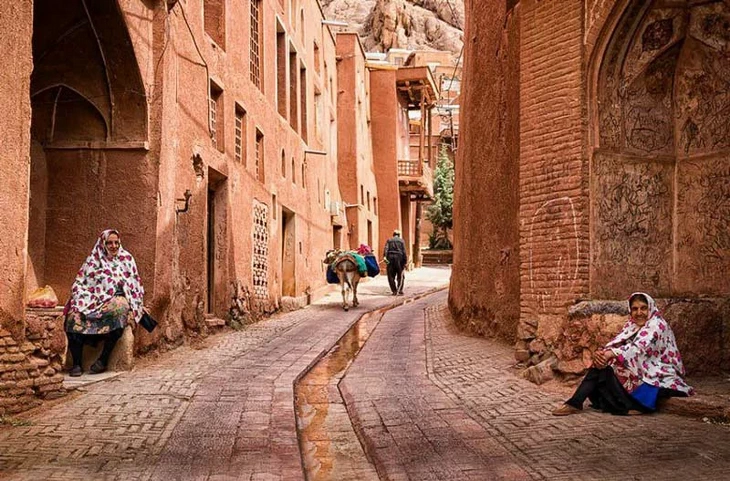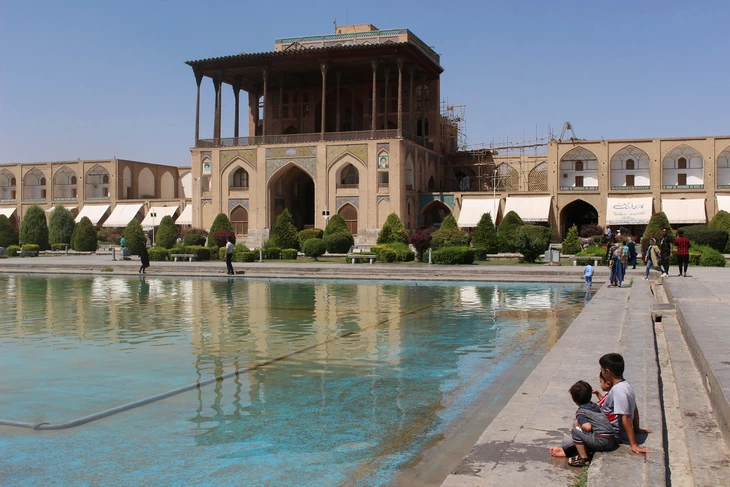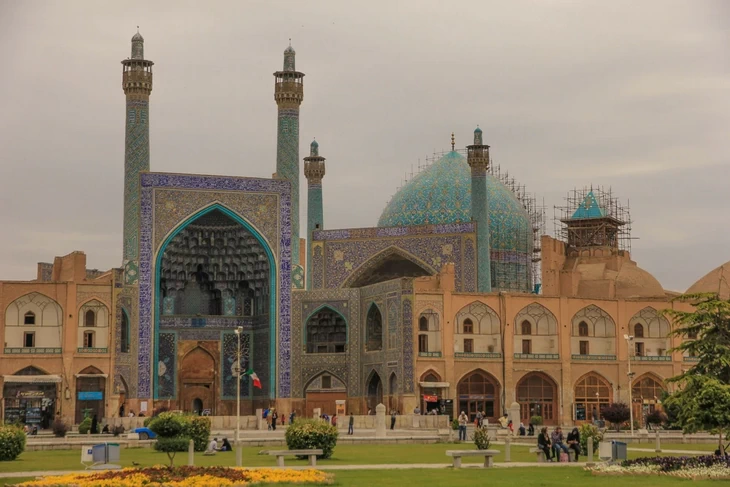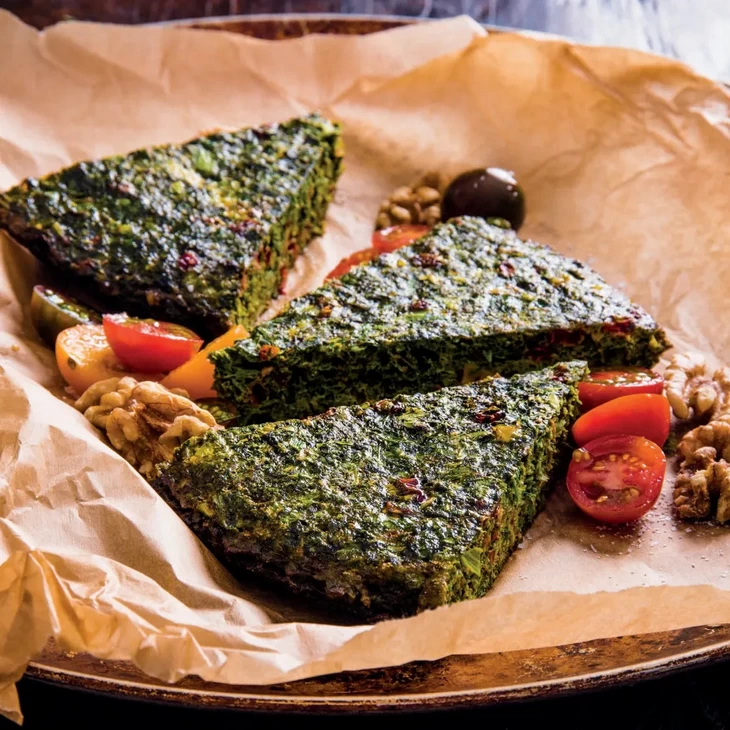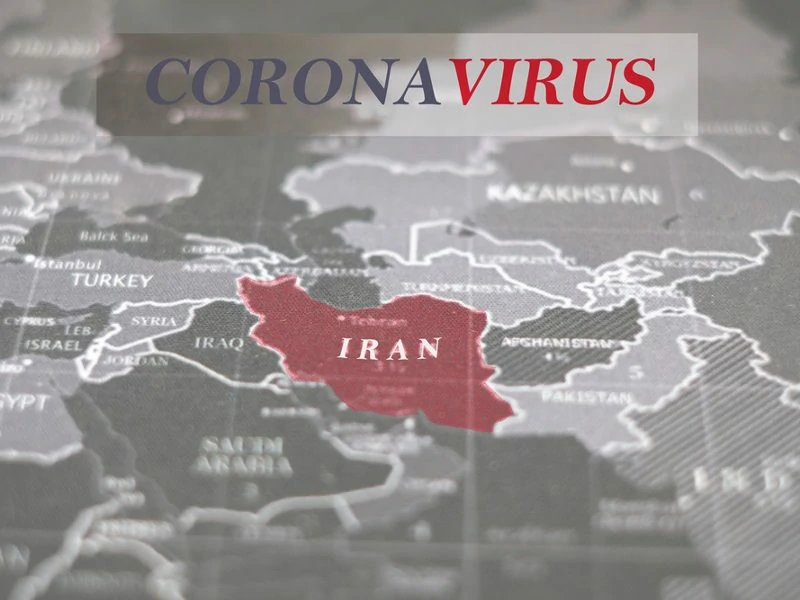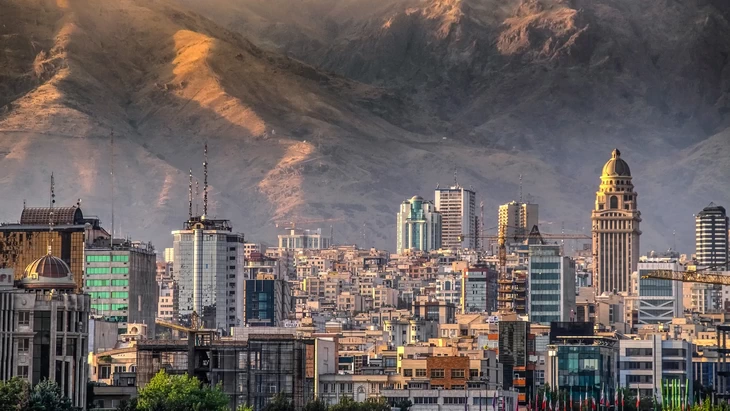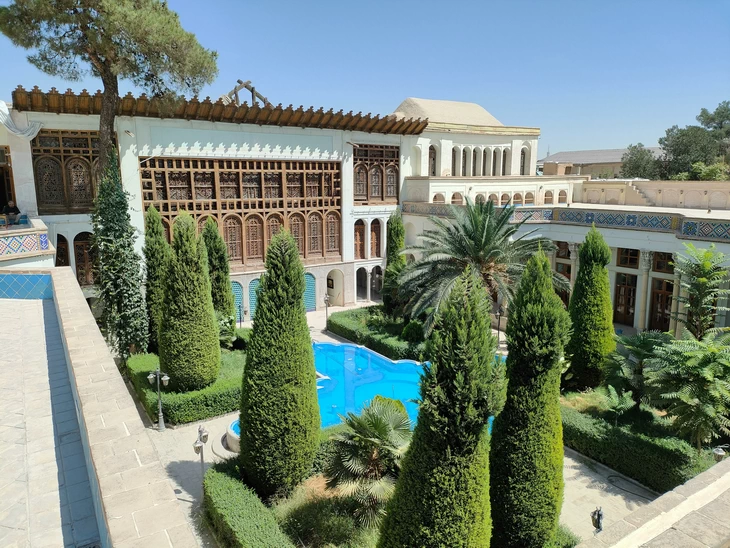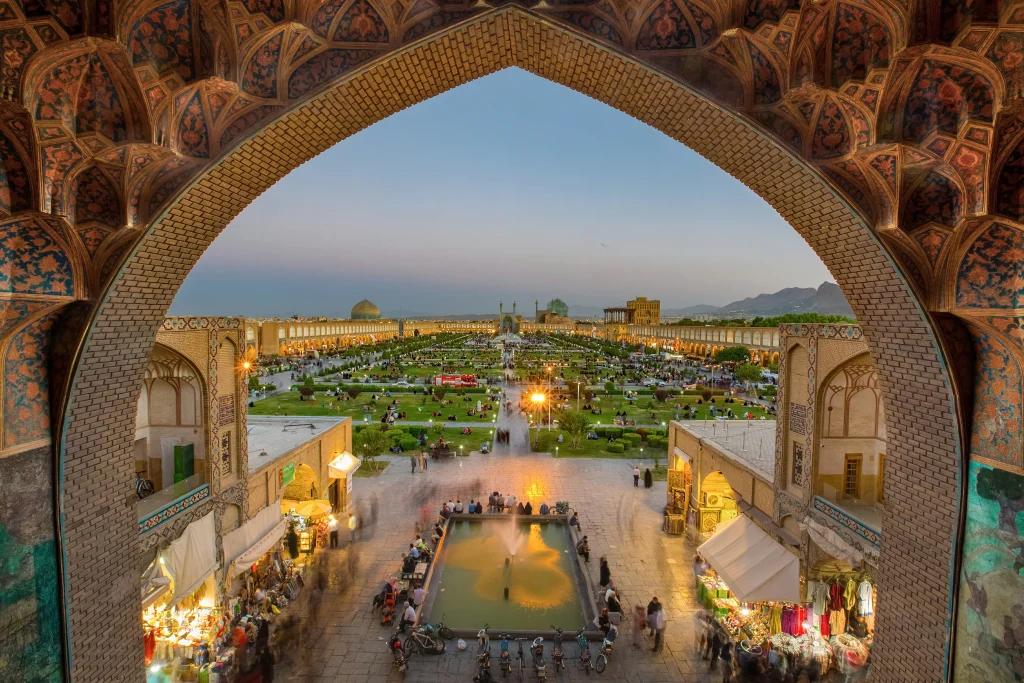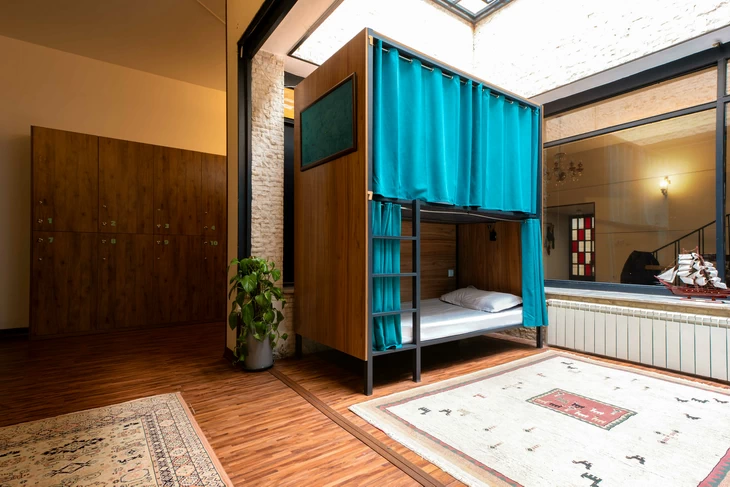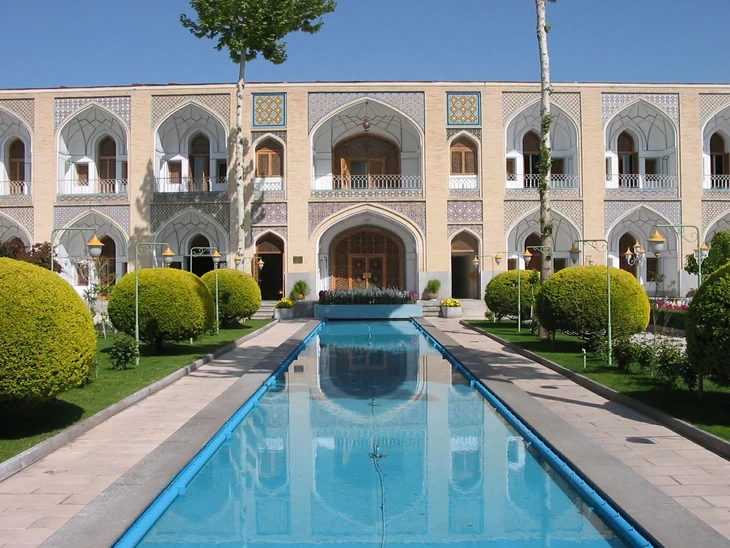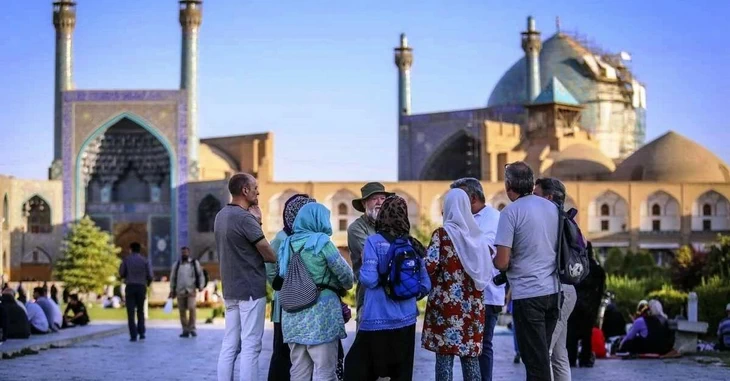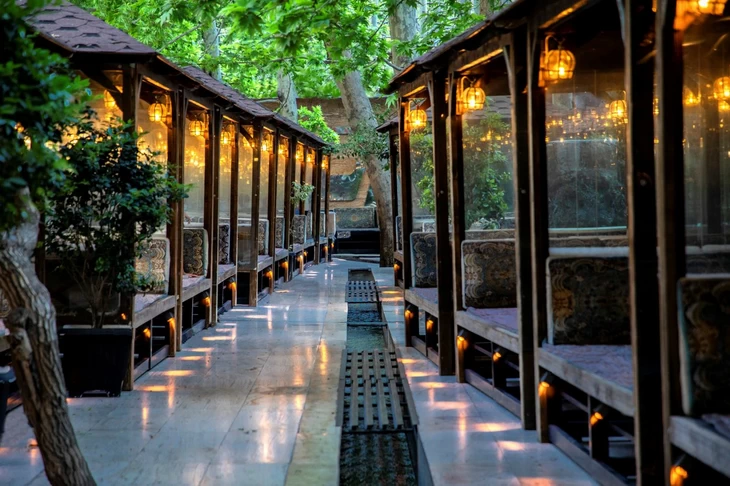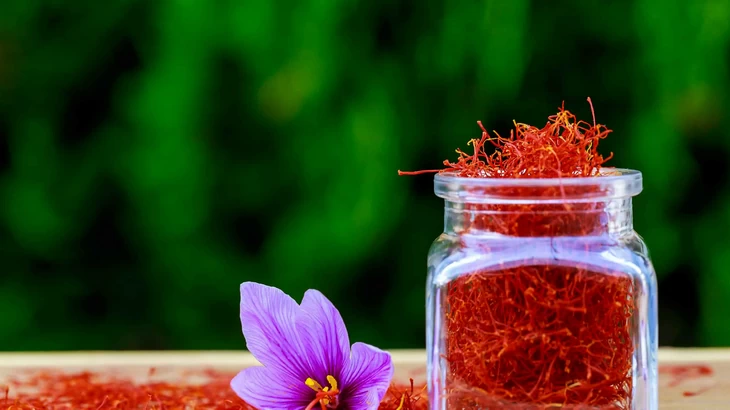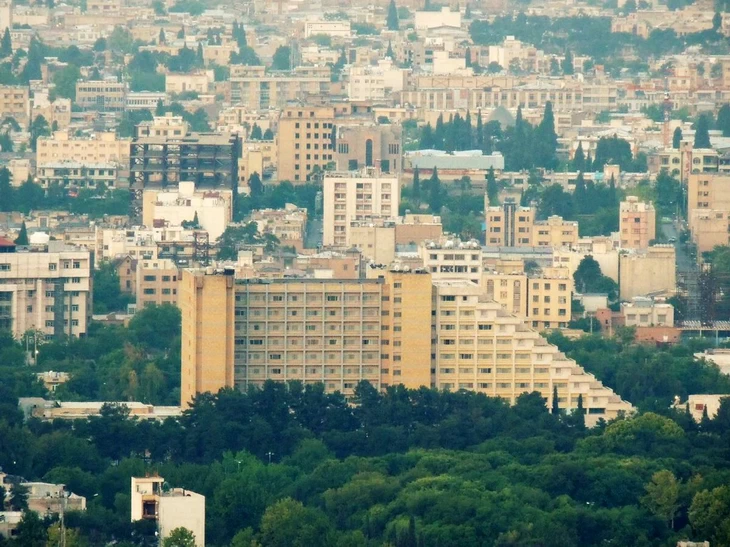Things to Do in Kashan: The City of Rosewater
Kashan is a well-threaded stop for tourists -primarily due to the fact that it’s on the way from Tehran to Isfahan, two destinations that pretty much every tourist makes stops at. That certainly should not make you think of the city as just a passageway between two more important cities. In this article, we’ll talk about the Kashan attractions and the history of the City of Rosewater.
You can take a look at our Iran SIM Card blog in order to remove the hassle of doing a bunch of paperwork and not having access to the Internet, and just enjoy your time! Also don’t miss out on our currency guide! And if you’re still a bit confused about different parts of your Iran trip, don’t hesitate to contact us!
Kashan Attractions
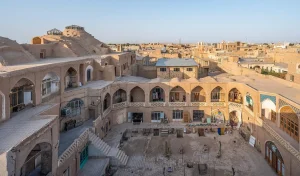
The has seen a good few dynasties and subsequent architectural/artistic styles come and go, and Kashan attractions have absorbed a bit from each one. While it has never been the capital of Iran, its proximity to the silk road has made it prosper through the years and has had rulers pay more attention to it. One dynasty whose presence can especially be felt in the city is the Qajar dynasty, when most of the important historical houses of the city were built.
Kashan’s Historical Houses
Kashan is well known for its beautiful and ornate historical houses. Many of these Kashan attractions have now been turned into luxury boutique hotels, restaurants, and cafes, but what they maintain is their significance in the city’s history. If you’re interested in architecture or visiting the on-site museums, if you want to learn about residential architecture in Iran, or if you’d like to know the history of this amazing city and the different rulers, families, and important figures it has housed, you’ll surely appreciate the historical houses.
The Borujerdi House
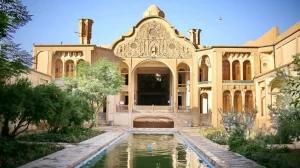
The Borujerdi House stands out among all the houses with its architecture and fine decorations. This house was made by the architect Ustad Ali Maryam in the 19th Century with the purpose of impressing his bride-to-be’s family. The main entrance leading to the interior is an octagonal corridor (called Hashti in Iranian architecture). On the inside, you can see the large and beautiful rectangular courtyard with its central pool.
The unique stucco works, Muqarnas, and wall paintings that decorate this majestic house are a feast for the eyes, but another significant part of this site is its forty-meter tall wind towers (or as we call them, Badgirs), which may serve a very functional purpose in that they help in keeping the interior nice and cool, but also add to the Borujerdi House’s magnificence.
The Tabatabaei House
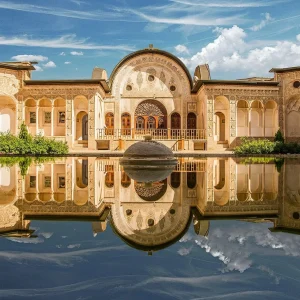
Another Qajar-era house, another wealthy and powerful family, and another work of Ustad Ali Maryam. The Tabatabaei House is another one of the must-see Kashan attractions. Also having three Badgirs to protect the inhabitants from the sometimes extreme heat of the city -not nearly as tall as the ones in the Borujerdi House though- as well as its own Qanats (a type of water canal originating from ancient Persia), the mirror work, glass work, and stucco work decorating the walls and ceilings are what make this house stand out.
The historical houses of Kashan are spectacular not only from an architectural or artistic standpoint, but also in that they each have their own story to tell. The Tabatabaei House was commissioned by the head of the Tabatabaei family and dedicated to his wife, Homa. Homa is also a mythical bird in Iranian culture and literature, and the house contains many designs in the shape of this bird.
The Abbasian House
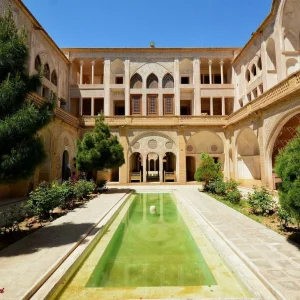
Having some of the most ornate and detailed decorations among its peers, the Abbasian House is another addition to the list of historical houses in Kashan. One could literally spend hours delighting in the fine plasterwork and stuccowork that cover the whole building, the lattices that so delicately encompass the window frames, or the majestic mirror hall. The lush central courtyard and its pool are all the more reasons not to miss out on this site. The Abbasian House also belongs to the Qajar era and serves as another reminder of how affluent families lived during those days.
The Ameri House
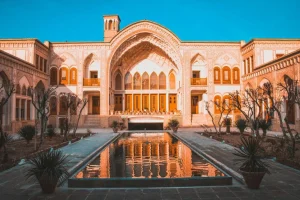
The original construction of this particular Kashan house dates back to the Zand dynasty, but since it was dealt heavy damage by a series of earthquakes, it underwent some major renovations and expansions in the Qajar era. The house’s Badgirs (which are the tallest among residential houses in Kashan) and lavish decorations are what make it stand out and worth visiting even after all the other historical houses in the city.
After investments and restoration efforts that were made in 1999 and continued for about fifteen years, the Ameri house has become part 5-star boutique hotel and part public museum. One can only hope that governmental and private organizations put all of their efforts into maintaining and safeguarding these magnificent monuments to Iranian architecture.
Agha Bozorg Mosque
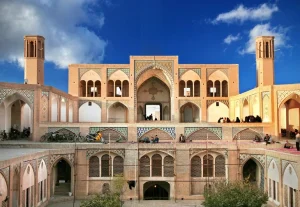
Another late 18th-century structure, though not a historical house, the Agha Bozorg Mosque, while it may look simple in design and structure, has a certain dignified charm to it that will draw anyone in. The beautiful tile decorations covering the façade of the porches -which are somewhat reminiscent of the Khaju Bridge’s tile decorations- and both the exterior and the interior layers of the large brick dome are truly beautiful, but one of the main attractions of this mosque lies in its basement: The Yakhchal.
Essentially an ancient Iranian fridge, a Yakhchal consisted of a dome, usually made out of thatch, covering an excavated pit, and was used to keep ice frozen during the summer or to store food. Aside from this reminder of how need breeds invention, the central courtyard and what was once a school inside the mosque are there to make your visit to this mosque that ranks high in the Kashan attractions even more delightful.
Kashan Bazaar
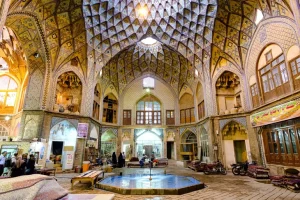
Depending on how far along you are in your trip, you may be getting a bit tired of Iranian (or Middle Eastern for that matter) bazaars. Hopefully, that doesn’t mean you’re going to miss out on the Kashan Bazaar. Among the oldest historical sites in the city, it consists of different Timchehs (a part of the Persian bazaar which is like a small square and has a high concentration of shops usually selling more unique and expensive items), mosques, Qanats, and the Amin ol-Dowleh Caravanserai, designed by the one and only Ustad Ali Maryam.

With its original construction dating back all the way to the Seljuq era and remarkable renovations and expansions made during the Qajar era, the Bazaar of Kashan serves as a collection of different architectural styles in perfect harmony. Aside from appreciating its brilliant architectural features like its sandy domes, this bazaar is the perfect place for buying handicrafts at low prices.
Fin Garden & Bathhouse – The UNESCO Listed Kashan Attraction

While this site’s significance partially comes from the important event that took place there (the assassination of Amir Kabir, prime minister to Naser ol-Din Shah of the Gajar dynasty, which we’ll get more into in a bit), you shouldn’t forget that the Fin Garden is part of the multiple sites listed under the Persian Garden in the UNESCO World Heritage Sites (take a look at our blog dedicated to Isfahan’s 3 World Heritage Sites).
We’ve talked enough about the Persian Garden and its history in our other blog, so you can head on over there to learn about the origins of building gardens in Ancient Persia. Suffice it to say that the most impressive thing about the Persian Garden and the reason why it is globally appreciated is the ingenuity it takes to create these artificial oases in the middle of the desert.
Fin
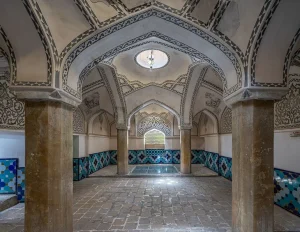
The Fin Garden was built -like many other gardens and pavilions- during the reign of King Abbas the Great of the Safavid dynasty. It has also undergone some expansions and restorations during the Qajar dynasty, which are particularly evident in some of the interior decorations of the central Kushk (essentially a pavilion or palace). A particularly famous part of this garden is its on-site bathhouse: The place where a great figure in Iran’s history was assassinated.
Amir Kabir -or Mirza Taghi Khan Farahani- served as prime minister to Naser ol-Din Shah, one of the most powerful kings in the Qajar dynasty. Amir Kabir made many important reformations in the country, especially when it came to public education: He formed the first newspaper in Iran, as well as the first modern college, which was called Dar ol-Fonun. He was well admired by the public and respected by the king, but problems arose when he tried to cleanse the governmental system from corruption. Provoked by his mother and peers, the king first exiled Amir Kabir to the Fin Garden, and later on sent assassins who murdered the former prime minister in the bathhouse. This is why the Fin Bathhouse is one of the Kashan attractions that is not only significant for its architectural aspects but also due to its historical importance.
Tepe Sialk
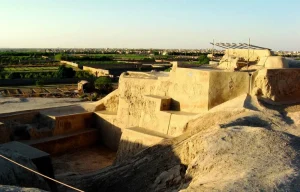
Sialk Hills, or as we call them, Tepe Sialk is one of the most ancient excavation sites in Iran: Evidently, this is a site belonging to an advanced civilization dating back to approximately 7500 years ago; Before the Achaemenids, before the Medes, before the Sumerians of Mesopotamia and the Elamites of Susa. If you have a background in history or architecture, you’ve probably heard of the Ziggurat. The temples built by the civilizations of Mesopotamia and Iran, the temples that were built tall in order to reach the heavens and inspired the ancient Egyptians to move on from their Mastabas and build their pyramids. Tepe Sialk houses the ruins of one of Iran’s Mastabas.
This is one of the Kashan attractions that may not be for everyone. You may prefer to see the ceramics and rudimentary tools built by different civilizations in museums, but if you are a history nut, it would certainly be a shame to miss out on such a significant excavation site.
Qamsar
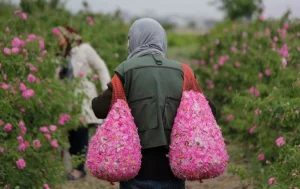
If you’re planning your trip to Kashan toward the end of spring, you’re in luck, because you’ll be just in time for rose-picking season. Kashan has earned a reputation as the city of Rosewater over a couple of millennia, and what better place to see the process of Rosewater production than the town of Qamsar? You can delight in the beautiful pink rose farms and enjoy this fragrant substance that has been used in cuisine, medicine, and hygiene since ancient times in Iran.
Abyaneh Village
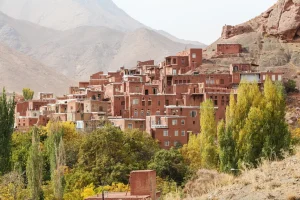
If there’s one attraction that you simply should not miss on your way from Kashan to Isfahan, it’s Abyaneh. This 1500-year-old village, made out of red clay, and filled with the friendliest locals will surely charm you no matter when you visit it. The culture that Abyaneh people hold, evident in their clothing, traditions, and way of life is truly unique and not to be missed out on.
Maranjab Desert & Caravanserai
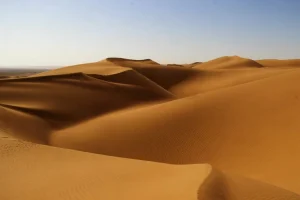
Another detour to make between Isfahan and Kashan -though not as conveniently en-route and accessible as Abyaneh- is the Maranjab Desert and its beautiful caravanserai. The desert itself is the perfect place for those interested in camping and stargazing, though it’s definitely recommended to do so with a group or ideally, a tour guide. One of the Kashan attractions that has become more and more popular among tourists who are interested in camping, the Maranjab Desert also offers a great opportunity for stargazers.
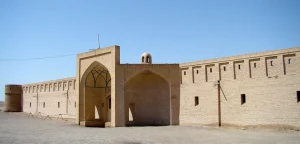
In the middle of the Maranjab Desert is the Maranjab Caravanserai, dating back to the Safavid Dynasty and the reign of King Abbas the Great. This caravanserai still operates as a place of accommodation, which can provide an interesting experience.
Food in Kashan
Some of the best restaurants you can find in Kashan are in the historical houses of the city. The Manouchehri, Morshedi, Ameri, and Abbasian restaurants are just a few of the places where you can have some delicious Iranian dishes.
Among all the delicious sweets and baked goods that you can find in the city, Haji Badam definitely stands out. This delicacy is made out of almond powder, cardamom, rosewater, saffron, and other ingredients and is a great choice for buying as souvenirs for the folks back home.
Kashan Accommodation
You won’t have a difficult time finding a place of accommodation in Kashan: It has 5-star boutique hotels, hostels, and inns to offer. Since a lot of our guests come to Isfahan via Kashan, we may know a thing or two about the best places you can go based on the feedback we have received. Staying at a place like the Puppet House can be a unique experience on its own, and finding a hostel that has just started its business can be very exciting, so we’ll save the matter of accommodation in the city for another blog!
If you want to learn a bit more about Iran hostels in general, here are some more posts you can read!
Also read our blogs about things to do in other cities!

